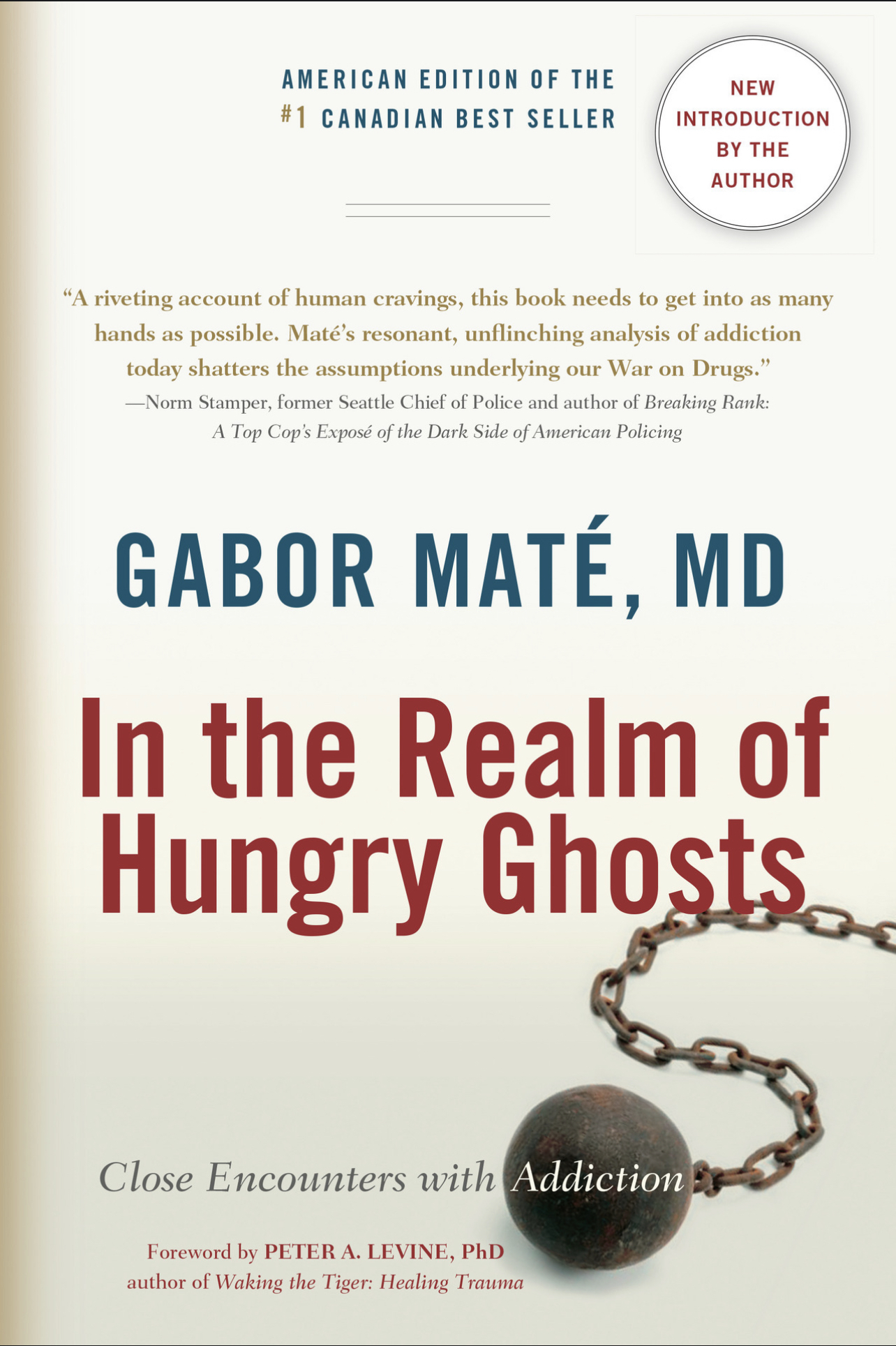← In the Realm of Hungry Ghosts Close Encounters with Addiction
In the Realm of Hungry Ghosts Close Encounters with Addiction Appendix II. A Close Link Attention Deficit Disorder and Addictions
Author: Gabor Mate Publisher: Berkeley, CA: North Atlantic Books. Publish Date: 2010-1-5 Review Date: 2022-4-18 Status:📚
Annotations
521
Diagnosing ADHD in cocaine and amphetamine addicts is tricky because the drugs themselves will drive physical and mental hyperactivity and disorganization. Under the influence of cocaine or crystal meth, a normally sedate person may resemble someone with severe ADHD. The other complicating factor is that, from adolescence onward, people with ADHD are at an elevated risk for addiction to cocaine and other stimulants. It becomes difficult to sort out what came first: addiction or ADHD. Having ADD myself, I have an intuitive feel for recognizing the condition in others, but the diagnostic key is the history of ADHD symptoms since childhood, predating the drug use.
523
The link between ADHD and a predisposition to addiction is obvious and, in fact, inevitable. The connection has little to do with genetics. ADHD is no more inherited genetically than addiction is, despite the widespread assumption among ADHD experts that it’s “the most heritable of all mental disorders.” The same facts that make twin and adoption studies largely irrelevant to the understanding of addiction also discredit the genetic theories regarding ADHD. There’s no need to repeat them here. The basic point is that ADHD and addictive tendencies both arise out of stressful early childhood experience. Although there is likely some genetic predisposition toward ADHD, a predisposition is far from the same as a predetermination. Two children with similar predispositions will not automatically develop the same way—once more, the environment is decisive.
523
Scientific findings since then have only confirmed that pre- and postnatal stresses are the most important determinants of this condition. According to one recent study, for example, 22 percent of ADHD symptoms in eight- and nine-year-old children can be directly linked to maternal anxiety during pregnancy.5 Abused children are far more likely than others to be diagnosed with ADHD, and the same brain structures affected by childhood trauma are most consistently abnormal in scans of children with ADHD.6
-
B. R. Van den Bergh and A. Marcoen, “High Antenatal Maternal Anxiety Is Related to ADHD Symptoms, Externalizing Problems, and Anxiety in 8- and 9-year-olds,” Child Development 75(4) (July–August 2004): 1085–97.
-
Martin H. Teicher, “Wounds That Time Won’t Heal: The Neurobiology of Child Abuse,” Cerebrum: The Dana Forum on Brain Science 2(4) (fall 2000).
524
My point is not that abuse is the cause of ADHD, although it certainly increases the risk for it, but that early childhood stress is the major factor—abuse being only an extreme form of childhood stress. It is the impact of early stress on the brain—maternal depression, for example—that creates vulnerability to ADHD and to addictions. Stresses or interruptions in the infant–parent relationship lead to permanent alterations in the dopamine systems of the midbrain and prefrontal cortex, disturbances that are implicated in both ADHD and in substance abuse and other addictions.7 If the prevalence of ADHD and other childhood developmental problems is rising in our society, it is not because of “bad parenting” but because the burgeoning stresses on the parenting environment appear to increase with each successive generation. Parents, and mothers in particular, are getting less and less of the support they need during their children’s early years. The issue is not one of individual parental failure but rather of a social and cultural breakdown of cataclysmic proportions.
- M. J. Meaney et al., “Environmental Regulation of the Development of Mesolimbic Dopamine Systems: A Neurobiological Mechanism for Vulnerability to Drug Abuse?” Psychoneuroendocrinology 27 (2002): 127–38.
524
ADHD and addiction have much in common, both in their characteristics and in their neurobiology. They are both disorders of self-regulation. They both involve abnormal dopamine activity—in fact, the medications used to treat ADHD are stimulants like methylphenidate (Ritalin, Concerta) or amphetamines (Dexedrine, Adderall), whose method of action is to increase dopamine activity in important brain circuits.8The personality traits of people with ADHD and with addiction are often identical: poor self-regulation, deficient impulse control, poor differentiation, and a constant need to find distractions from distressing internal states. These distractions can be internal, as in tuning out, or external, as in the need to be stimulated by activities, food, other people, or substances. Thus people with ADHD are predisposed to self-medicate.
- Nora D. Volkow et al., “Depressed Dopamine Activity in Caudate and Preliminary Evidence of Limbic Involvement in Adults with Attention-Deficit/Hyperactivity Disorder,” Archives of General Psychiatry, 64 (2007): 932–940.
525
The implications are twofold. First, it is important to recognize ADHD and to treat it appropriately in childhood. As I point out in Scattered Minds, such treatment need not involve medication in every case, and in no case should medications be the only treatment. ADHD is not a disease, inherited or otherwise; it is primarily a problem of development. The key question is not how to control symptoms but how to help the child develop properly. That is the brunt of my argument in Scattered Minds, and I need not say more on it here.
526
It is not possible to treat ADHD successfully if we ignore addictions that may exacerbate the underlying disorder. This is so whether the person is addicted to substances or to one or several of the many behavioral addictions that our culture makes readily available and may even present in a glamorous light.
